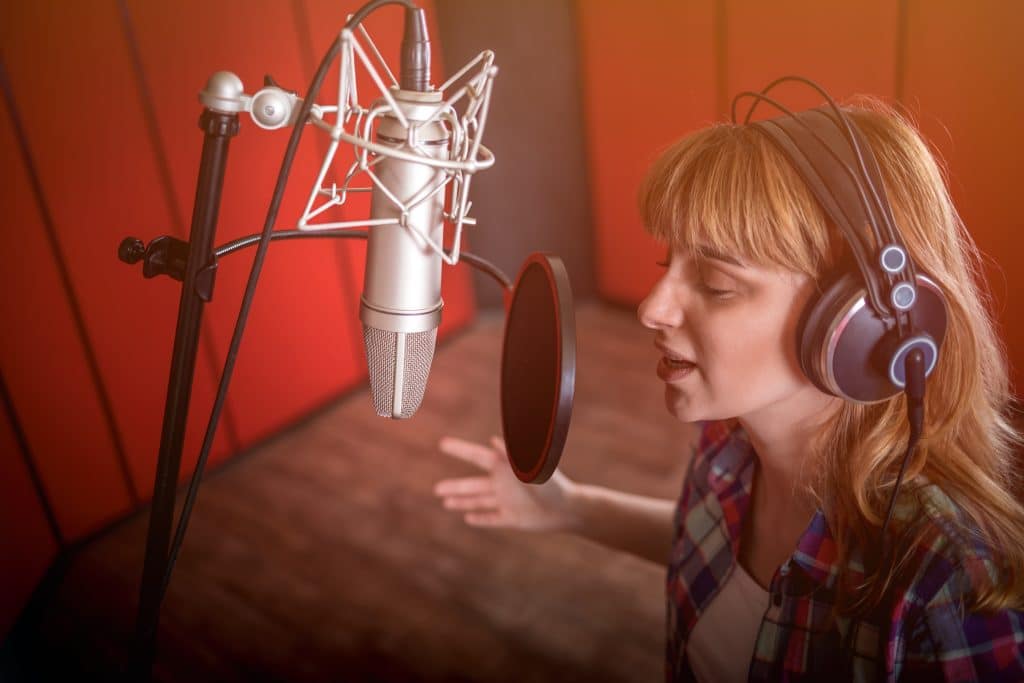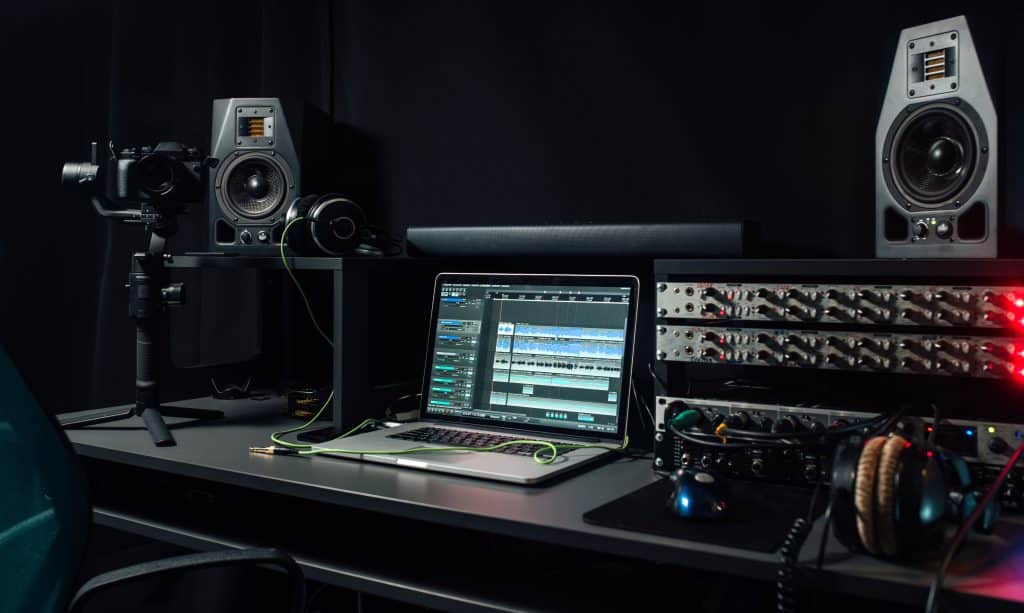At first glance the definition of a “voice over” is pretty straightforward. Merriam-Webster defines voice over as “the voice of an unseen narrator speaking” or “the voice of a visible character expressing unspoken thoughts.”
Basically, a voiceover is any audio recording where you can hear someone talking but you don’t see them speaking.
While the definition is clear-cut, the application of voiceovers spans a wide array of industries and media types. From commercials and movies to TV shows and video games, voice overs play a pivotal role in adding depth, emotion, and personality to characters and stories. So to truly answer the question “What is a voice over?” and understand its significance, we’ll have to explore all of the various forms of voice over work, the process of creating a voiceover, and the skills required to succeed as a voice actor.

The Many Forms of Voiceover Work
There are several different types of voice over projects. Some are instantly recognizable, like the captivating narration of an audiobook. Some are iconic! Who hasn’t dreamed of voice acting in a Walt Disney animated movie at least once in their life?
However, there are countless voiceover applications that we encounter in our everyday lives. Ever found yourself on hold during a call to the doctor’s office, listening to a recording of someone providing information?
Yeah, that’s a voiceover too!
From the highly visible to the often overlooked, let’s dive into the diverse array of voice over projects that exist and explore the unique aspects of each.
Commercial Voice Over
Commercial voice overs involve lending a distinctive voice sound to advertising and promotional materials. A quality voice not only captures the attention of the audience but also creates an emotional connection, effectively conveying a brand’s message. Examples of commercial voiceovers include television and radio commercials, online advertisements, promotional videos, and public service announcements. The right performance can make a brand’s message more memorable, increasing brand recognition and influencing consumer behavior.
Narration Voiceover
Narration voiceovers play a critical role in various different types of videos, such as documentaries, e-Learning videos, and explainer videos. These projects demand a professional voice actor who can articulate complex ideas clearly, concisely, and engagingly. A high-quality voiceover recording not only maintains the audience’s attention but also enhances the overall effectiveness and success of the content. Narration voiceovers can also be found in corporate training materials, product demonstrations, and informational webinars.
Audiobook Narration
Audiobook narrators possess the unique talent of bringing books to life through their engaging storytelling skills. To captivate listeners, they must create distinct personas and sounds for each character, convey emotions, and maintain the audience’s interest throughout the story. Audiobooks have surged in popularity over the years, with revenue projections reaching over $35 billion by 2030. This growth provides ample opportunities for actors to showcase their talents and connect with audiences worldwide.
Animation and Cartoons
In the world of animation and cartoons, voiceovers are an essential component in creating unforgettable characters. It’s important to remember that voice acting is still acting, and the emotional depth and nuance that actors bring to animated characters can make all the difference. Some of the most iconic characters in history have emerged from the world of animation, demonstrating the power and influence of talented vocal artists who bring these creations to life.
Video Games
The role of voiceovers in video games has evolved significantly over the years, offering players more immersive and realistic experiences than ever before. A skilled voiceover artist breathes life into game characters by conveying emotions, personality, and depth, making the gameplay more engaging and emotionally resonant. With the rapid growth and expansion of the video game industry, actors have the opportunity to contribute to groundbreaking projects and redefine the boundaries of interactive storytelling.
Other Voiceover Projects
The list goes on and on, including podcasts, radio shows, and automated voice systems. Voiceover artists might find themselves working on phone menu prompts, virtual assistants, GPS navigation systems, or even providing the voice for talking toys and gadgets. Each project demands a unique skill set and style, reflecting the dynamic and versatile nature of the voiceover industry.
The diversity of voiceover opportunities ensures that there is no single, definitive example of what a voice over should be. Instead, the industry thrives on the rich variety of sounds, styles, and talents that actors bring to the table. This wealth of possibilities allows voice artists to adapt and evolve, finding new ways to captivate audiences and bring stories to life.

The Voice Acting Process
A voiceover is much more than just what happens inside of the recording studio. Each project is a journey, with each step along the way vital to the overall success. Broadly speaking, there are three main aspects of the process: pre-production, recording, and post-production.
Pre-Production
Before starting a voiceover recording, it’s essential to understand the script and the character being portrayed. Take the amount of time needed to experiment with different voices and tones until you find the one that is right for the character and best tells the story. And yes, this applies to all types of voiceovers, not just animation and video games.
Recording
This is the big moment. All of the preparation from the pre-production phase has led to the actor standing in a recording studio speaking into a microphone. The recording session may take place in a large professional studio, or a small personalized home setup. It doesn’t matter where the recording takes place, as long as the space is free of background noise, is properly treated to reduce unwanted echo and reverberations, and equipped with high-quality professional equipment to capture the best audio possible.
Post-Production
Post-production involves editing and polishing the audio files to produce a polished, professional final product. This stage may include removing any background noise, adjusting volume levels, and incorporating effects or music to elevate the overall quality of the voice over.
A skilled audio engineer can also utilize equalization (EQ) to further enhance the audio, tailoring it to the actor’s voice and their unique performance. For example, a bright and bubbly female voice would require different EQ settings than a deeper male voice. These adjustments, combined with expert mixing, result in a final product that truly shines.

What Is Voice Over?
If you’ve made it this far you can see that voice over work is a dynamic and exhilarating field, encompassing an extensive array of projects and industries. From commercials to video games, voice actors play an indispensable role in bringing characters and stories to life.
If you are looking to hire a voice over talent for your video or project, there are several different ways to get your job posted, receive auditions, and find the perfect voice. One of the easiest ways is to listen to my voice over demos, and reach out to start a conversation. You can ask for an audition, or we can simply talk about your project and see if I’m a good fit for what you need!





